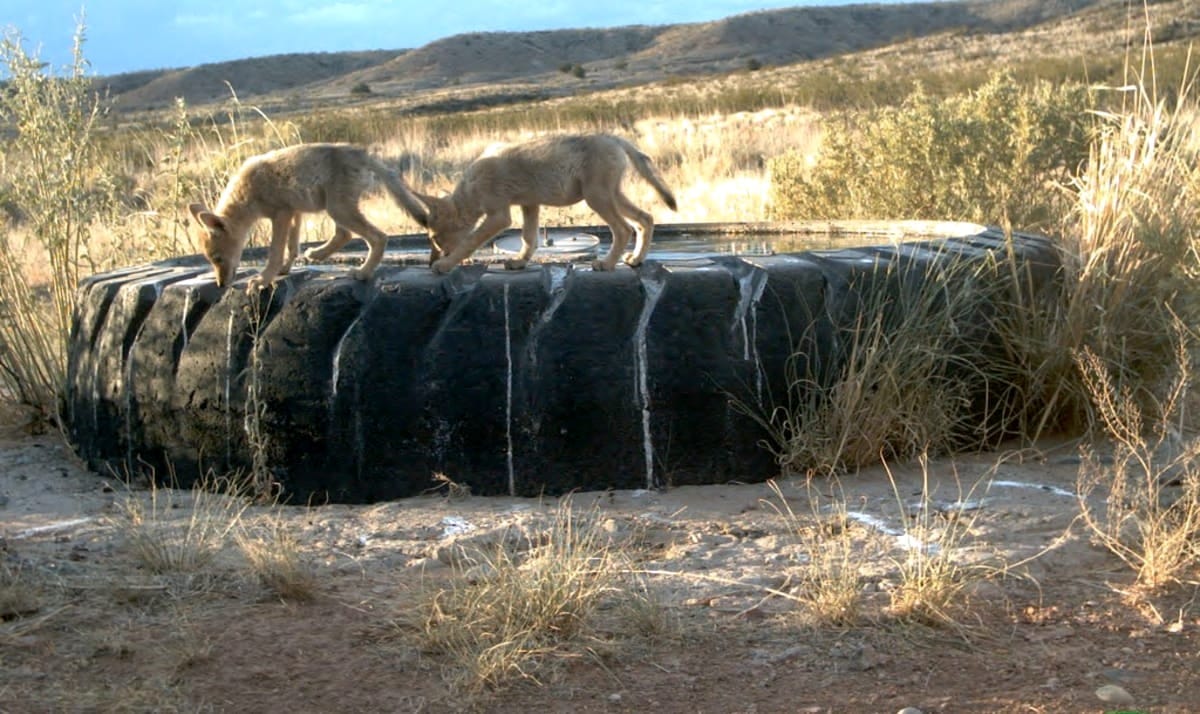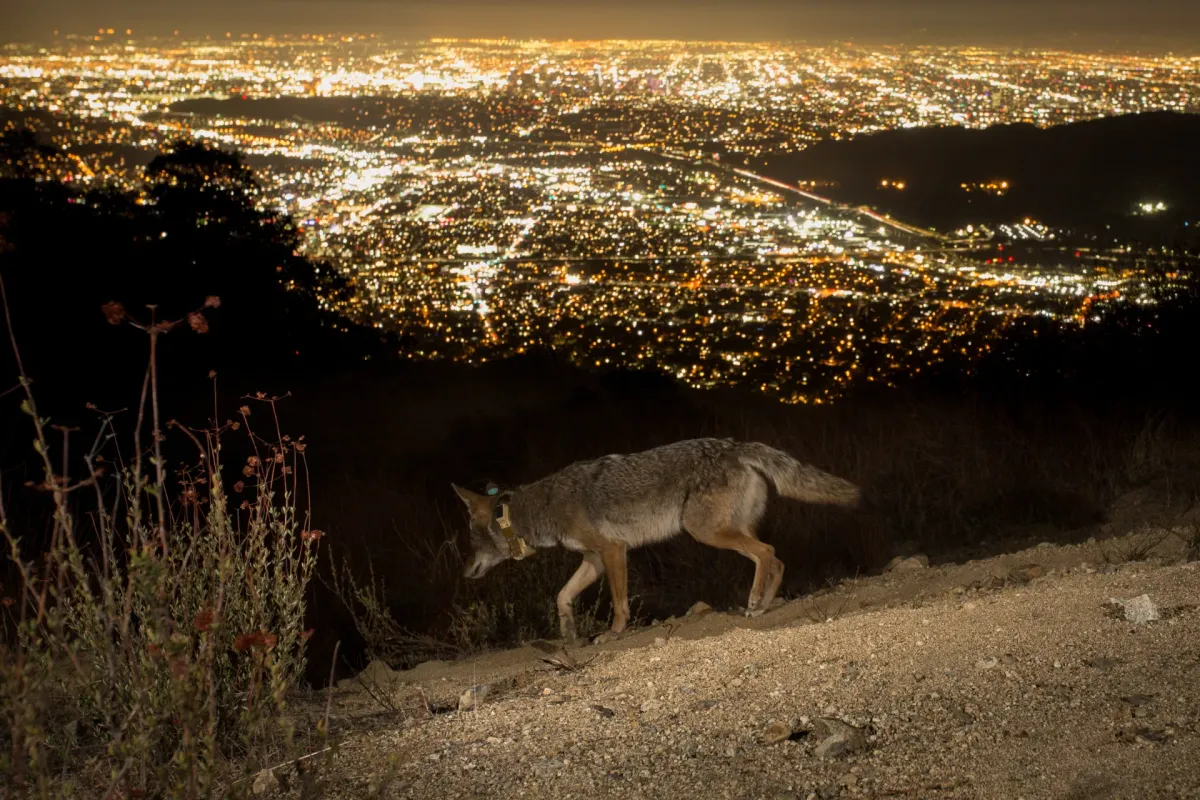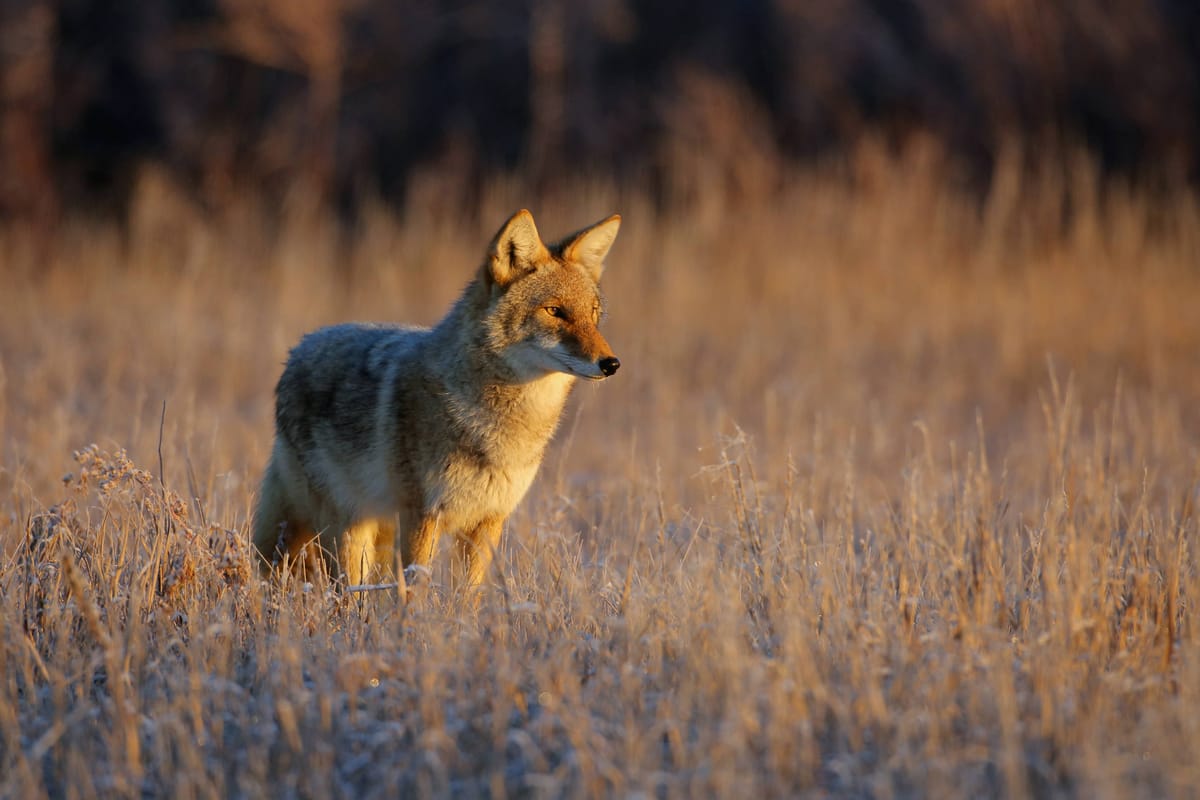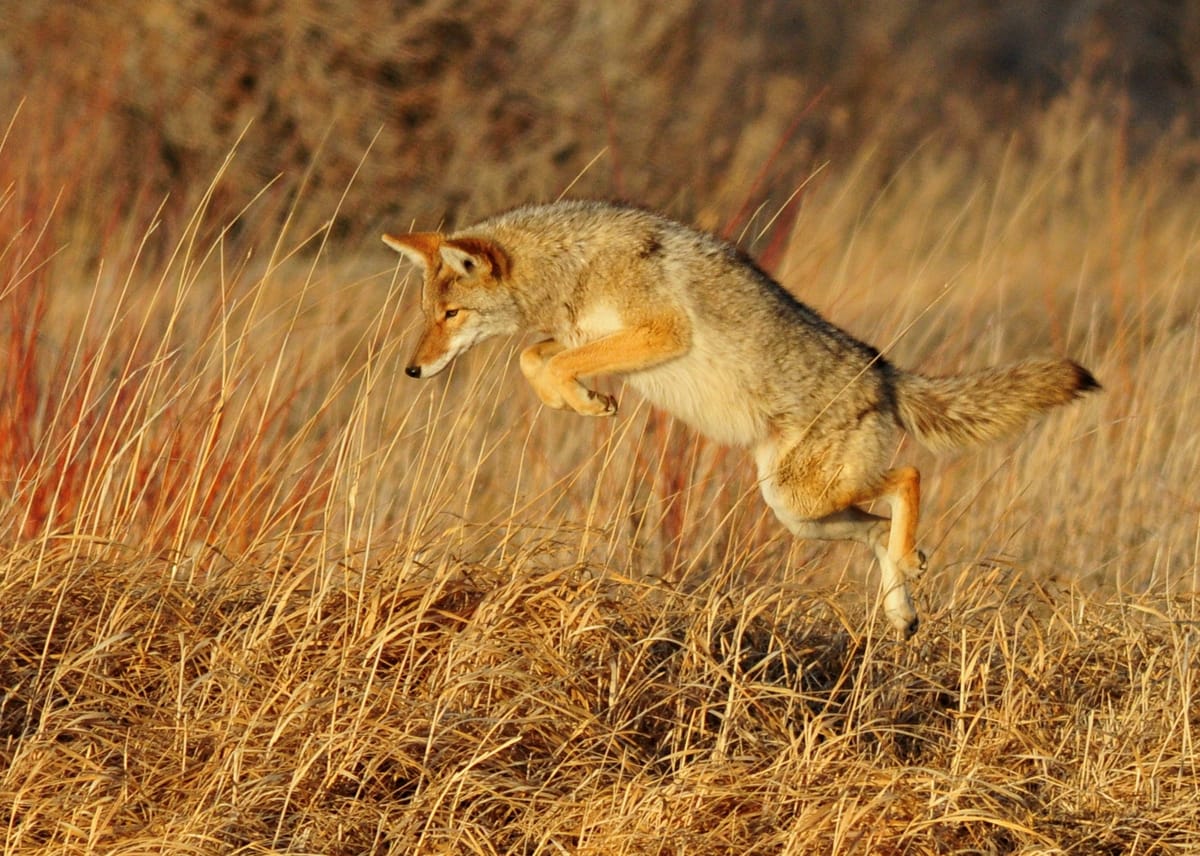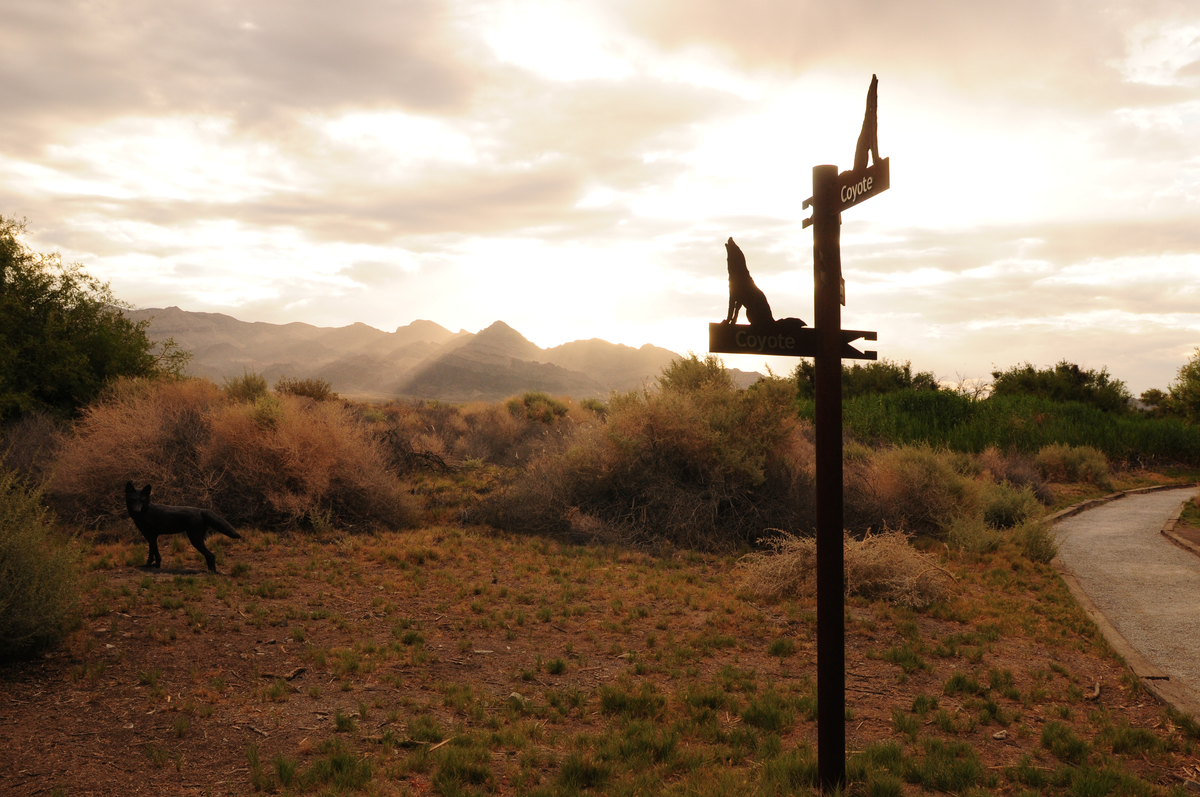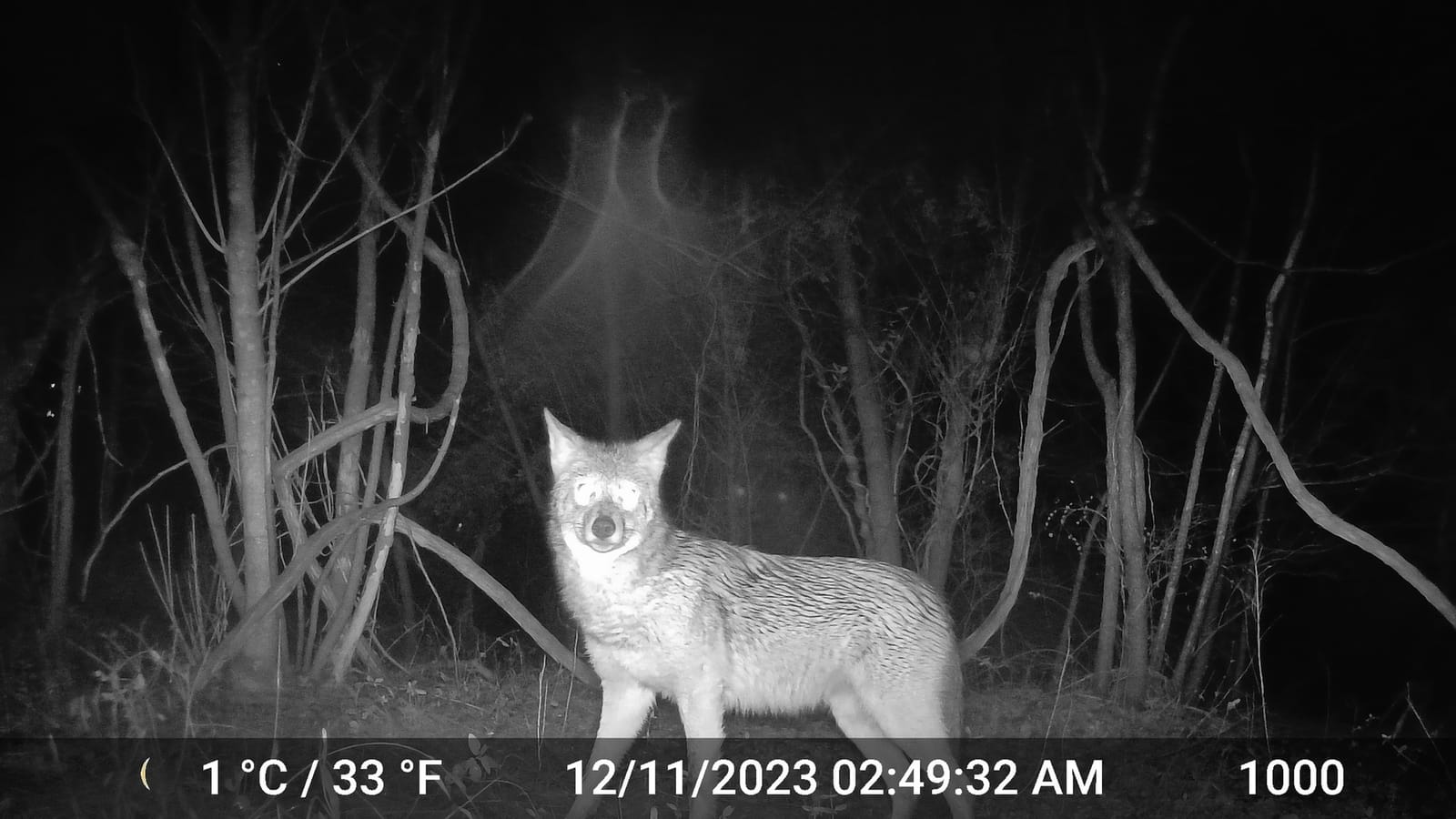In recent decades, coyotes have become a permanent fixture of California’s cities and suburbs. Once considered shy predators of deserts and rangelands, coyotes are now among the most visible large carnivores in metropolitan regions such as Los Angeles, San Diego, and the Bay Area. Their presence in urban neighborhoods highlights both their remarkable adaptability and the challenges of human–wildlife coexistence.
Coyotes in urban and suburban settings play a dual role: they help control populations of rodents and other small animals, but they also create risks by preying on pets, scavenging in residential areas, and sometimes showing bold behavior toward humans. Understanding how coyotes adapt to these environments is essential for reducing conflict and building effective coexistence strategies.
Sources and References for Our Coyote Coverage
Our coyote hub is based on trusted resources from government agencies, universities, and peer-reviewed research. Explore the full list below:
- National Park Service (NPS) – Coyote Information Page
- California Department of Fish & Wildlife (CDFW) – Wildlife Incident Reporting (WIR) System
- California Fish & Game Commission – Nongame Animal Regulations
- UC IPM – Pest Notes: Coyotes
- USDA APHIS – Wildlife Damage Management Technical Series: Coyotes (PDF)
- Project Coyote – Be Coyote Aware Flyer (PDF)
- California Department of Fish & Wildlife / Human–Wildlife Conflict Program – Coyote Management Plans and Wildlife Watch (PDF)
- California Department of Fish & Wildlife – Coyote Range Map (PDF)
- UC ANR – Publication 8598: Livestock Protection Tools for California Ranchers (PDF)
- Scientific Reports (2024) – Urban coyotes in southern California show adaptations to anthropogenic landscapes and activity patterns
- Ecology Letters (2025) – Environmental Health and Societal Wealth Predict Movement Patterns of an Urban Carnivore
Adaptations to Urban Environments
Coyotes thrive in urban areas by modifying their diet, behavior, and movement patterns to exploit resources in human-dominated landscapes.

Dietary Shifts
In cities, coyotes supplement their natural prey (rodents, rabbits, and birds) with garbage, pet food, fallen fruit, compost, and even domestic pets. Studies in Southern California found urban coyotes consuming food waste at high rates, with domestic cats representing a significant proportion of their diet in some neighborhoods.
Behavioral Changes
To minimize conflict, urban coyotes often become primarily nocturnal, foraging at night and avoiding human activity during the day. This contrasts with their more diurnal behavior in rural areas.
Use of Corridors
Fragmented city landscapes do not deter coyotes. Instead, coyotes use parks, golf courses, flood control channels, railway lines, and greenbelts as safe corridors for movement. These features allow coyotes to traverse urban sprawl and establish territories in densely populated regions.
These adaptations illustrate why coyotes are among the most successful carnivores in California’s urban ecology. Rather than being pushed out by development, they have learned to live alongside people — often unnoticed until a conflict arises.
Urban Coyote Ecology & Population Dynamics
Coyotes in cities behave differently from their rural counterparts, adapting their ecology to the abundance of human-provided resources.
- Home Range Sizes: In wildlands, a coyote’s territory may cover 10–40 square miles, but in urban and suburban areas, territories shrink to 2–10 square miles due to the higher density of food sources.
- Population Dynamics: Abundant food and reduced hunting pressure often result in higher pup survival rates in urban areas compared to rural ones. This can lead to stable or growing populations even where conflicts are common.
- Disease Considerations: Urban coyotes can act as reservoirs for diseases such as mange, distemper, and rabies, which can spread within coyote populations or, more rarely, to pets. While rabies is relatively rare in California coyotes, it remains a concern for public health monitoring.
Overall, urban environments often provide coyotes with enough resources to support populations at densities much higher than in rural landscapes, making conflict prevention more important than population suppression.
Human–Coyote Conflicts in Suburbs & Cities
As coyotes establish themselves in urban and suburban California, interactions with people are inevitable. The most common conflicts include:
- Pet Predation: Unsupervised cats and small dogs are highly vulnerable, especially during nighttime hours.
- Garbage & Attractants: Coyotes frequently scavenge trash, compost, and unsecured outdoor food. Fruit trees and fallen produce also provide an easy food source.
- Bold Behavior: In neighborhoods where hazing is not practiced, coyotes may lose their natural wariness of humans, sometimes approaching people too closely or appearing during the day.
Conflict data collected through the CDFW Wildlife Incident Reporting (WIR) system shows a steady increase in urban conflict reports over the past two decades, particularly in Southern California counties. These reports highlight that conflicts are not evenly distributed: some neighborhoods experience chronic issues, while others see few or no incidents.
In many cases, conflict arises not because coyotes are overabundant, but because human behaviors—such as feeding wildlife, leaving garbage unsecured, or letting pets roam freely—create opportunities for coyotes to exploit.
Coexistence & Conflict Prevention
Despite frequent conflicts, research and management experience show that most issues with urban coyotes can be prevented through simple, proactive measures. California agencies and outreach groups emphasize that coexistence is possible when communities follow science-based guidelines.
Key strategies include:
- Do not feed coyotes—Intentionally or unintentionally. Feeding wildlife encourages boldness and increases conflict.
- Secure attractants—Store garbage in wildlife-proof containers, pick up fallen fruit, and avoid leaving pet food outdoors.
- Protect pets—Walk dogs on short leashes, supervise small pets in yards, and avoid dusk/dawn hours when coyotes are most active.
- Practice hazing—Use loud noises, clapping, shouting, water sprays, or motion-activated deterrents to reinforce coyotes’ natural fear of people.
Community-level initiatives like Wildlife Watch programs also strengthen prevention by training residents to recognize attractants, report conflicts, and respond consistently. These neighborhood-based approaches create safer environments for people and pets while reducing unnecessary lethal control.
Urban Research in California
California has become a national leader in urban coyote research, with several major studies illuminating how coyotes adapt to city life:
Impacts of Coyote Colonization on Coastal Mammalian Predators
Found that Southern California coyotes shift their activity to nocturnal patterns in order to reduce human encounters while exploiting food waste and small pets as food sources.
Environmental Health and Societal Wealth Predict Movement Patterns of an Urban Carnivore
Demonstrated that environmental health and socioeconomic conditions influence coyote movement. Wealthier neighborhoods with tighter waste management often see fewer conflicts, while areas with lower infrastructure investment may experience higher conflict risk.
Documented long-term patterns of urban boldness and the importance of hazing to prevent coyotes from becoming habituated to people.
These findings highlight that coyote conflict management is not just a matter of wildlife behavior but also of human behavior, city planning, and community engagement. Successful coexistence strategies must combine individual responsibility with systemic changes, like better waste management and coordinated neighborhood action.
Conclusion
Coyotes are now an enduring part of California’s urban and suburban ecosystems, from the quiet suburbs of the Bay Area to the dense neighborhoods of Los Angeles. Their adaptability — shifting diets, nocturnal behavior, and use of city corridors — ensures they will continue to thrive alongside people.
For residents, this means coyotes are not occasional visitors but long-term neighbors. Coexistence depends on proactive human behavior: securing attractants, supervising pets, practicing hazing, and supporting community-based initiatives like Wildlife Watch.
With proper education and engagement, California communities can minimize conflict while preserving the ecological benefits coyotes provide, from rodent control to scavenging. As this page demonstrates, urban coyotes are not simply a challenge but also an opportunity to rethink how we share space with resilient wildlife.
Learn More About California Coyotes
